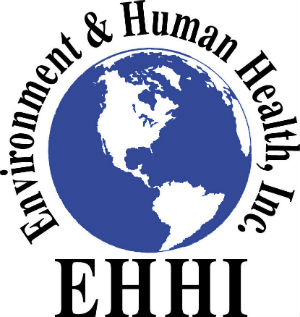Artificial Turf: Metal Analysis
RESULTS
The metal analysis conducted at Yale University shows that metals are
present in, and presumably released from, the crumb rubber. The metals that are
released from the various samples are very different, reflecting the lack of
standardization in the shredded waste tires. This fact is due to all the different
tires that are collected from all over the country and then put into shredding
machines. There is no standardization — and in fact the tires come from all
different kinds of vehicles: trucks, both large and small, cars and as many
different kinds of tires as you can imagine.
The wide variability of shredded waste tire mulch and crumb rubber infill throws all of those "safety" studies in doubt because no two samples are necessarily the same. It further casts doubt on studies of older fields where the crumb rubber has broken down to dust over time and use. The cadmium levels in this analysis go from (mg/kg) 0.16 to 1.39; the lead levels go from (mg/kg) 2.6 to 33.1 and the zinc levels go from (g/kg) 8.8 to 22.2. These are large variables due to the different samples of what is supposedly the same products — showing no standardization at all.
METHODS
Methods used in the metal analysis of the crumb rubber tire synthetic turf
infill and the rubber tire playground mulch at Yale University.
The shredded rubber tire playground mulch samples tested were provided by the
manufacturer and were purchased in new bags of rubber mulch for use in gardens and
playgrounds. The rubber tire infill for synthetic turf fields was obtained as new
infill material from installers of synthetic turf fields. There were 5 samples of
infill from 5 different installers of fields and 9 different samples of rubber mulch
taken from 9 different new bags of playground mulch. The methods of testing were as
follows.
Aqua Regia Method
Crumb rubber samples were rinsed three times with deionized water. Fine grained samples were drained with filter paper, while coarser samples were decanted. They were then dried overnight at 60 degrees C. After drying, crumb rubber samples were cut into pea-sized pieces and pulverized in a Spex CertiPrep 6750 freezer mill for 6 minutes at a rate of 10 cycles per second and after 6 minutes of cooling time. The resulting rubber powder was sieved through a 0.84 mm sieve to remove large fragments. After sieving, the rubber powder was dried again overnight at 60 degrees C to remove condensation.
0.2–0.15 gram quantities of the rubber powder were weighed into Teflon vessels and 10 ml of aqua regia was added. The vessels were sealed and loaded into a CEM Mars 5 microwave assisted digester and heated at 1200 watts power maintained at 800 psi and 160 degrees C for 10 minutes followed by 1200 watts power maintained at 800 psi and 170 degrees C for 10 minutes. The vessels were left to cool to ambient temperature (22 degrees C), after which 2 ml aliquots of aqua regia extract were filtered through 0.45 um syringe filters. The 2 ml filtrates were diluted to 40 ml with deionized water to yield 5% aqua regia solutions, which were analyzed by ICP-MS (Perkin Elmer Elan DRC-e) for cadmium and lead, and which were analyzed by ICP-AES (Perkin Elmer Optima 3000) for zinc. All labware was acid washed in an acid bath containing 10% HCl and 10% HNO3 at room temperature. Sieves and freezer mill components were acid washed in 5% acetic acid.
